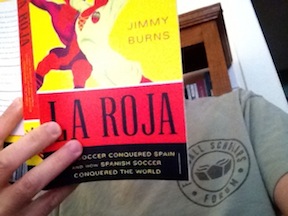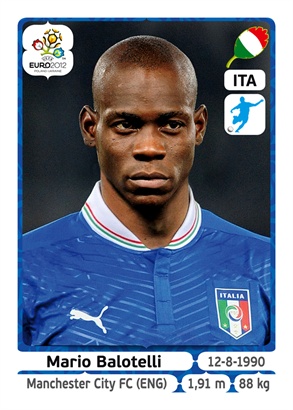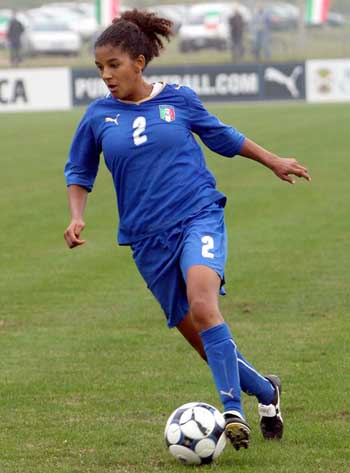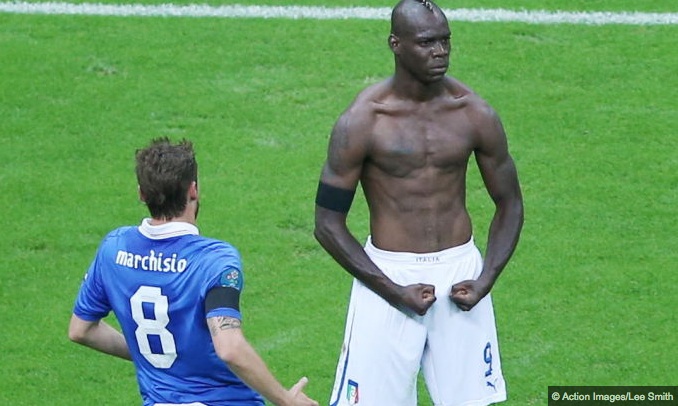 Euro 2008, World Cup 2010, and now Euro 2012 champions. Spain’s 4-0 demolition of Italy in yesterday’s final in Kiev secured their third consecutive major tournament victory in the last four years. The question many are asking today is whether La Roja is the greatest team in the history of football.
Euro 2008, World Cup 2010, and now Euro 2012 champions. Spain’s 4-0 demolition of Italy in yesterday’s final in Kiev secured their third consecutive major tournament victory in the last four years. The question many are asking today is whether La Roja is the greatest team in the history of football.
Hundreds of millions of TV viewers watching the final in pubs, homes, and public venues around the world witnessed Spain’s best performance of the Euros. Propelled by Xavi’s sudden resurgence and Del Bosque’s flawless tactics, lineup, and game management, the Spanish tiki-taka approached a near-perfect synthesis of art and science. Meanwhile Italy’s tired legs and coach Prandelli’s naive decision to deploy 2 strikers, no defensive midfielders, and field injured Chiellini, De Rossi and even Motta (as a final substitute!) exposed the substantial qualitative gap separating the two finalists.
While my emotional wounds from enduring such a hideous hiding are still raw, I’m interested in what people have to say about how Spain 2008-12 compares, say, with Brazil 1970? Germany 1972-74? Or even Uruguay 1924-1930 and Hungary 1950-54 if we delve into a radically different media era? Should we consider club teams too? Real Madrid 1955-60, Ajax 1971-73, Milan 1989-90, and Barcelona 2009-2011 immediately come to mind.
Here are my top 5:
1. Uruguay 1924-30 (winners of 1924 & 1928 Olympics and 1930 World Cup)
2. Spain 2008-2012
3. Brazil 1970 (good case for the best ever, but won only one title)
4. Hungary 1950-54 (undefeated, 42 wins and 7 draws).
5. Barcelona 2009-11 (FIFA Club World Cup: 2009, 2011; Champions League: 2008–09, 2010–11; UEFA Super Cup: 2009, 2011; La Liga: 2008–09, 2009–10, 2010–11; Copa del Rey: 2008–09, 2011–12; Supercopa de España: 2009, 2010, 2011)
What do you think? Share your rankings in the comment section!
Afritalians: Past is Prologue
 The Africanization of Italy may have started 2200 years ago as Hannibal of Carthage led his troops and elephants across the Alps on the way to Rome, but Mario Balotelli’s two-goal performance in Italy’s defeat of Germany in the Euro 2012 semifinal may be mainstreaming it.
The Africanization of Italy may have started 2200 years ago as Hannibal of Carthage led his troops and elephants across the Alps on the way to Rome, but Mario Balotelli’s two-goal performance in Italy’s defeat of Germany in the Euro 2012 semifinal may be mainstreaming it.
Italians across the political spectrum are gushing in their praise of the 21-year-old striker. “Pride of Italy!” screamed the web site of La Gazzetta dello Sport, which earlier in the week had printed an insulting cartoon of Balotelli as King Kong by Valerio Marini (see below). (Despite an outpouring of criticism from readers and on social media, the paper could only muster this sad excuse for an apology: “if certain readers found the cartoon offensive, we apologize.”) 
Earlier in the tournament Balotelli had won accolades for his acrobatic overhead strike against Ireland and for his impeccable penalty which opened the shootout against England (scored against Man City teammate Joe Hart). Now, on the eve of the final against Spain in Kiev, ordinary Italians and the media are comparing Balotelli to Gigi Riva, Totò Schillaci, and Gianluca Vialli — illustrious Azzurri of the past who transcended the football pitch to become popular icons of national culture. A big and very noticeable difference between Super-Mario and his predecessors, of course, is that Balotelli is black — the Palermo-born son of the Barwuahs from Ghana who was adopted by the Balotellis of Brescia. He is the first Afritalian football superstar.
Super-Mario’s central role in potentially ushering in a new phase in the Africanization of Italy is reflected in Italian media stories highlighting how Mario is like you and me: he loves football, family, pizza, and hanging out with his friends. In a country where mothers are sacred and where the Virgin Mary is venerated almost as much as her more famous son, Mario’s loving embrace of Mamma Silvia in the stands at the Warsaw stadium shot an arrow into the heart of every Italian. “Boastful and ‘mammone’, Balotelli represents the prototype of the Italian,” wrote Il Giornale, a conservative paper owned by Silvio Berlusconi’s brother, Paolo.
 And Balotelli is not an isolated case; he’s not even the only Afritalian in the Euro squad. Sitting on the reserves’ bench is 24-year-old Angelo Obinze Ogbonna (at left), a central defender who plays his club football for Torino. Born in Cassino, near Rome, of Nigerian parents, Ogbonna was recruited into the Torino youth academy at age 14 and played his first serie A match at 19. Like Balotelli, Ogbonna speaks Italian without a trace of accent. The experiences of Super-Mario and Ogbonna open up an opportunity to consider the history of Afritalian footballers.
And Balotelli is not an isolated case; he’s not even the only Afritalian in the Euro squad. Sitting on the reserves’ bench is 24-year-old Angelo Obinze Ogbonna (at left), a central defender who plays his club football for Torino. Born in Cassino, near Rome, of Nigerian parents, Ogbonna was recruited into the Torino youth academy at age 14 and played his first serie A match at 19. Like Balotelli, Ogbonna speaks Italian without a trace of accent. The experiences of Super-Mario and Ogbonna open up an opportunity to consider the history of Afritalian footballers.
Let’s start with Claudio Gentile. He was born in Tripoli, the son of a Sicilian father and a Tripoli-born mother possibly of Italian background, and grew up playing street football in Libya before moving to Como in 1961 with his family. Nicknamed “il libico,” Gentile had his best years at right back for Juventus and Italy in the 1970s and early 1980s, forming with Dino Zoff, Antonio Cabrini, and Gaetano Scirea one of the stingiest defensive lines of all time. Gentile’s ferociously effective man-to-man marking of Maradona and Zico in the 1982 World Cup, which Italy won, has become the stuff of legend.
We had to wait nearly two decades for the next Afritalians to make an appearance in the national team. In 2001, Fabio Liverani, the Rome-born son of a Somali mother and Italian father, made his international debut in a friendly against South Africa. Despite a solid career as a midfielder with Lazio, Fiorentina, and Palermo, Liverani only played twice more for the Azzurri. Around the same time, Matteo Ferrari, the Algeria-born son of an Italian father and a Guinean mother, played eleven times in the heart of Italy’s defense. Prior to Balotelli’s success, Ferrari had held the record for most international appearances for an Afritalian. (He now plays for the Montreal Impact in MLS.)
 There are other players of African blood in Italian football. Among them, Stephan El Shaarawi, Stefano Chuka Okaka, and Fabiano Santacroce (of Afro-Brazilian/Italian parentage) have been capped at junior level. There is also a female Afritalian: left back Sara Gama (at right), who also earned the distinction of becoming the first Afritalian woman to captain the U-19 national team, and leading them to the 2008 European title.
There are other players of African blood in Italian football. Among them, Stephan El Shaarawi, Stefano Chuka Okaka, and Fabiano Santacroce (of Afro-Brazilian/Italian parentage) have been capped at junior level. There is also a female Afritalian: left back Sara Gama (at right), who also earned the distinction of becoming the first Afritalian woman to captain the U-19 national team, and leading them to the 2008 European title.
Mauro Valeri, a sociologist and author of La Razza in campo: Per una storia della Rivoluzione Nera nel calcio (EDUP, 2005) wonders if the increasing presence of black players at junior and senior level is “perhaps a sign of a transformation underway, of the affirmation of a Black Revolution [in football] that for more than a decade has been unfolding in Italy.” While structural changes would be necessary for such a shift to be lasting and meaningful, social perceptions of Afritalians may be changing thanks to Balotelli’s sudden popularity. In a grim age of austerity and structural adjustment, Italians seem eager for another taste of Super-Mario-triggered football euphoria.

Super-Mario Balotelli wrote a new page in Germany’s History of Failure against Italy in Warsaw today. He scored two goals, the first a header off a delightful Cassano cross; the second a thunderous strike from outside the box, which he celebrated in inimitable style (photo above). He is Italy’s pride and joy.
Manager Cesare Prandelli did his part as well, completely outcoaching his German counterpart Jogi Loew. Italy now moves on the final against Spain on Sunday in Kiev.
Full Italy-Germany highlights courtesy of UEFA.com here.
After two more draws (1-1 and 0-0) at the 1988 and 1996 Euros, on July 4, 2006, Germany and Italy met again in the semifinals of the World Cup. The venue was the Westfalenstadion in Dortmund, an intimidating ground for any visiting team.
In a remarkable affair reminiscent of the 1970 World Cup semifinal at the Azteca (see my previous post here), extra time was needed. The climax defies description. So let’s leave it to Fabio Caressa and Giuseppe Bergomi (1982 World Cup winner at age 18) of Sky Italia to resurrect the memories — spine-tingling ones from an Italian point of view — of that cathartic evening.
Follow me on Twitter during the game tomorrow: @futbolprof
E daje Italiaaaaa!
July 11, 1982: the World Cup final at the Santiago Bernabeu in Madrid. Four years earlier, West Germany had drawn 0-0 against a young, enterprising Italian side in the second group stage of the 1978 World Cup — the Argentinean Generals’ Mundial. (Video highlights here.)
1978 was also the year of the assassination of Italian Prime Minister Aldo Moro (who was held for a month in an apartment building adjacent to my elementary school), and the inauguration of President Sandro Pertini, a dedicated socialist and former anti-Fascist resistance fighter. We didn’t know it back then, but “The Years of Lead” were about to come to an end. Football — or calcio as we call it — was about to show us that the road to the future went beyond Left and Right.
With the pipe-smoking Pertini enjoying the 1982 final next to King Juan Carlos in the VIP section of Real Madrid’s majestic stadium, the Azzurri demolished the (West) Germans 3-1. Not everything went perfectly that night. Graziani’s injury forced an early substitution and then Cabrini — my mother’s favorite player — missed a penalty: the only time I ever heard my uncle, a man of the cloth, swear audibly.
The second half was all Italy. Physically and mentally fatigued after their penalty shootout victory gainst Michel Platini’s France in an extraordinary semifinal (highlights here), Germany caved in. Paolo Rossi opened the score with his sixth goal of the tournament and then Tardelli made it 2-0, celebrating it with such emotional abandon that we imitated it for years on playgrounds and pitches around the land.
When Altobelli added a third late in the game Pertini leaped out of his seat, waving his arms, rejoicing, telling everyone around him that “adesso non ci prendono più!” (Now they’re not going to catch us anymore!). Breitner got a consolation goal, but it didn’t matter. When the Brazilian referee theatrically picked up the ball with his hands, raised it above his head and blew the final whistle, match announcer Nando Martellini pronounced to the masses that we were “Campioni del Mondo! Campioni del Mondo! Campioni del Mondo!”
Millions of Italians thundered in a massive impromptu street carnival the likes of which had not been seen, the elders told us, since Liberation. Giving in to pleas from me and my friend Fabio, my uncle, in his clerical collar, honked his rickety FIAT 127’s horn all the way from our parish in the Marche hills to coastal Pesaro so that we could experience these historic celebrations. A quarter of a century later, another generation would experience the intoxicating feeling of World Cup victory . . . and Germany, once again, would play a key role in Italy’s success story.
Come back tomorrow for the final installment of Germany’s history of failure against Italy.
Germany’s History of Failure Against Italy
Germany is favored to win Thursday’s Euro 2012 semifinal against Italy. While Die Manschschaft has played the best and most consistent football in the tournament, the Azzurri have won just one game in regulation and reached the semifinal only after surviving a penalty shootout against England. History provides a counterpoint to soccernomics-style prognostications, however, because the Germans — or West Germans — have never defeated Italy in Euros or World Cup tournaments.
It started with a forgettable goalless draw at the 1962 World Cup in Santiago del Chile, but ignited in a globally televised World Cup semifinal played at the Azteca Stadium in Mexico City on June 17, 1970, which Italy won 4-3 in extra time. Outside the Azteca a plaque commemorates it as “The Match of the Century.” The video above combines footage of the original broadcast with Fabio Caressa’s 21st-century play-by-play commentary. Rumor has it that this clip is streaming on a loop in the Azzurri’s team hotel . . .
Come back tomorrow for part 2 of Germany’s history of football failure against Italy.

Guest Post by *Hikabwa Chipande
NDOLA — Zambia’s victory in the 2012 African Nations Cup has spawned a new fashion on the Copperbelt — the country’s industrial and football heartland — where people now wear Chipolopolo (Copper-bullets) replica jerseys as well as chitenge (women’s waist wraps) in the national colors. Selling Chipolopolo regalia has also become big business in street markets and makeshift stores. Clearly, the African champions have re-energized the mood of the nation and revitalized support for football among ordinary citizens, politicians, and business people.
The stability of copper prices, increases in copper production, an improving economy, and the pride of being African football champions, have led ZCCM Investments Holdings, formerly Zambian Consolidated Copper Mines, to reconsider supporting the sport. For instance, private companies such as Mopani Copper Mines and Copperbelt Energy have resumed their funding of Kitwe’s famous Nkana Red Devils and Power Dynamos.
“Winning the African Cup changed things,” says Red Devils head coach Linos Makwaza. “People have started coming back to football. At Nkana [Football Club] Mopani [Copper Mines] is now involved and has taken over which is good,” Makwaza says. The relationship between mining companies and football is not a new one. It has shaped the history of the game in Zambia. As far back as the 1920s, when copper mining started on the Copperbelt under British colonial rule, and into the independence era up to the privatization of the ZCCM mining company in 1991, government-controlled mining companies provided football grounds, financial resources, coaches, players, and stimulated a deeply rooted fan culture.
Zambia’s Nations Cup success has inspired politicians such as Sports Minister Chishimba Kambwili to encourage new owners of copper mining companies to sponsor Mighty Mufulira Wanderers, Nchanga Rangers, Nkonkola Blades, Roan United, Kalulushi Modern Stars and other important, but struggling, clubs in the mining province. Abraham Nkole, currently Mighty Mufulira Wanderers manager and a former player in the 1960s and 1970s, sees this shift as an opportunity to resuscitate the “lost glories” of Copperbelt football.
The opening of a modern stadium in the mining town of Ndola has also injected new life in Copperbelt football. I was in attendance on June 9, 2012, for the inauguration of the Chinese-built 40,000 capacity Levy Mwanawasa Stadium, which hosted a Zambia vs. Ghana 2014 World Cup group D qualifying match (see photo). Thousands of fans clad in green and orange Chipolopolo replica jerseys besieged Ndola. With Vice President Dr. Guy Scott in the stands, Chipolopolo beat the Black Stars 1-0 in the packed stadium, thus renewing their hopes for qualifying to Brazil 2014 after being thumped by Sudan 2-0 in Khartoum a week earlier.
Practitioners and fans I spoke to on the Copperbelt are encouraged by recent developments and hope the mining province will soon reclaim its dominant position in Zambian football after two decades of decline. The political and financial investment that is fueling the game’s resuscitation owes much to Chipolopolo’s international success. The question is whether such support will continue should the national team perform badly at next year’s African Nations Cup in South Africa.
*Hikabwa Chipande is a PhD candidate in African history at Michigan State University. His dissertation research is on the social and cultural history of football in 20th-century Zambia. He can be contacted at chipande [at] msu [dot] edu.